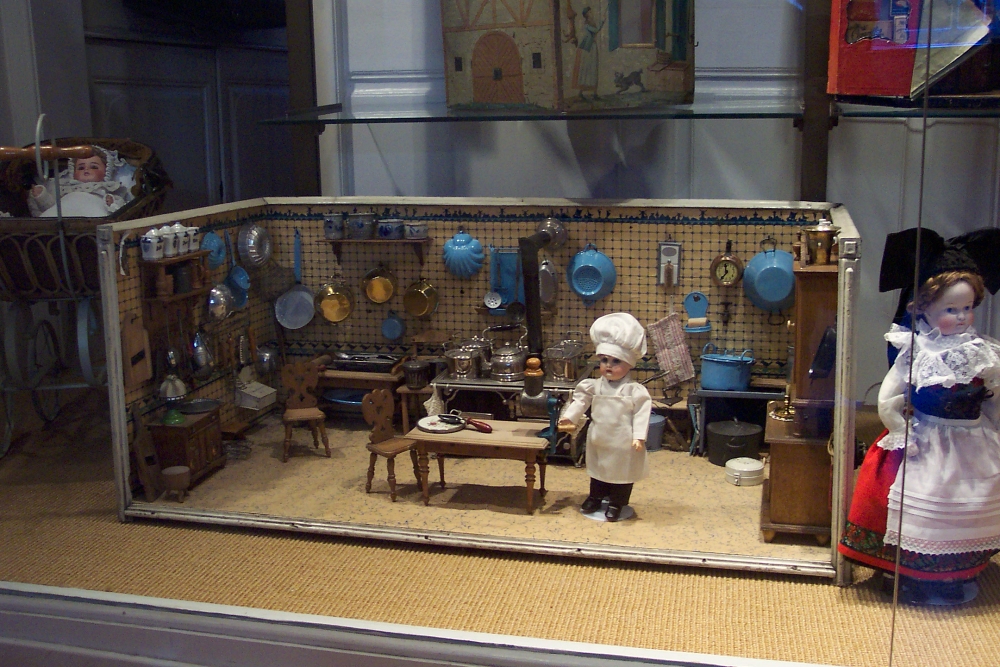The Fascinating History of Nuremberg Kitchens
A lot of work went into these beauties.
In the early days of the industrial revolution certain cities became centers of particular industries. In some cases this was based on natural resources, like the warm and basin-like environment of Grasse which allowed for a robust flower and perfume industry that still flourishes today. Back then Germany was known as a center for glass making, metal smithing, and for toy-making. In fact so many toys were made in Germany that the term Nuremberg kitchens came to be associated with one toy in particular made in that German city.

Nuremberg kitchen is the English name given to toy kitchens made for little girls to play with. In German these were called Puppenküchen, or doll kitchens. These functioned more like dioramas than dollhouses or the larger play kitchens we know today, but they were a wildly popular toy in the 19th century and early 20th century.
A really good Nuremberg kitchen would have had all the fixins: pots, pans, tile, a blacked stove, curtains, silverware, china, and the dolls to go in them. Anything and everything one could use in a real kitchen could be made in miniature. Candlesticks, jelly molds, salt cellars, match safes, and many more state of the art kitchen goods were made to a tiny scale.

Many of the dolls inside these kitchens were female and it was thought that encrouaging this type of play readied young girls to take on the duties and challenges of running a household later on. It was believed that it would be good practice for when they got older. They were also meant to enchant their owners with kitchens that may have been more kitted out than the real life versions she may have later in life.
But, it wasn’t only the factories and cottage industries of the 19th century that saw the dollhouse kitchen rise to fame. A luxurious example from between 1650 and 1700 (below) shows that Nuremberg has been a place for fine miniatures long before machines would help to churn out dollhouses by the thousands.

In fact the first kitchens of this type were known in Germany starting in 1572 when Princesses Dorothea and Anna were given this style of plaything. In the 1800s they were popular to give at Christmas. And, so cherished were these toys that women often saved their Nuremberg kitchens and passed them on to their daughters. They were popular all across Europe and examples today can be found in notable museums in the Netherlands, Germany, France, and England- among may other places.
Today these tiny kitchens can be collectible, but they can vary wildly in price. Some that are homemade and date from the 20th century can sell for very small sums. However, opulent examples from upper class households in earlier periods can be valuable. Not surprisingly some of tiny details get lost over the years. But that’s always a risk with toys that are loved, isn’t it?
SKM: below-content placeholderWhizzco for DOT

